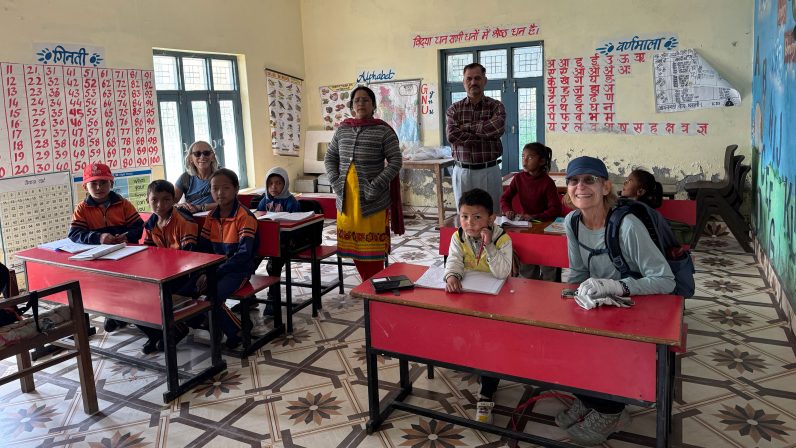It’s been more than a month since I’ve written a blog. The night of May 1st, my friend and I left Sky Harbor for New Delhi. I returned home from India May 19th, with four days left of the regular school year. It was a whirlwind week, accentuated by significant jet lag, so it’s taken me awhile to fully re-inhabit my life here in the desert. After having a week to regroup and then successfully launching our summer camp these past few days, I’m ready to think about my time in India and how it will shape the person I am moving forward. There are so many experiences and places to sort through.
Our time was spent mostly in Dharamsala, Dehradun, Mussoorie, Harsil, Rishikesh, and Varanasi, with Delhi being our hub for transitions. Each place held something special, and I have to say that our time in Harsil provided a significant amount of inspiration. It’s a small village in the Himalayas that can either be accessed by helicopter, or a winding narrow road that would be considered a one-lane road by our standards. The process of getting there and leaving was a whole story in itself.
Our time in Harsil was physically challenging for me, due mostly to the altitude and the fact that going almost everywhere in the area involved climbing and descending. For example, the homestay where we stayed for five days was about two-thirds of a mile off the main road, accessible via a trail up the side of a mountain. The views of high snow-covered peaks and kindness of the local people made it all worthwhile, though. It was a place that daily revealed surprises.
One of the best surprises was along the Sattal Trek on our last day in Harsil. Sattal means “seven lakes” and the trail winds through a gorgeous forest. Although we only saw three lakes, which were more like ponds, we did discover something wonderful on the way. Right before we got to the forest, we passed a small government school. We asked our guide about it, and he said we could go inside if we wanted. We said yes, and instantly we were in a small classroom with seven students and their teacher. Their facial expressions reflected complete astonishment. The children, who were all Nepali, ranged in age from about 5-10 and were all working on different skills. Older children were writing lessons in Sanskrit, and one younger boy was learning how to read time on a clock face.
We took a few pictures with them as they sat calmly in their seats. Then I left the room for a few minutes to exchange addresses with their teacher. When we returned they were all out of their seats with my friend Catherine taking group selfies! I’m hoping the rest of their day wasn’t too much of a challenge for their teacher. They invited us for lunch but we had to decline because we weren’t sure when we’d be back their way.
In comparison to our Seed classrooms, those seven beautiful children had very little. Yet they were learning, and had adults around them who cared. I hope it’s enough to carry them forward into lives that will open into possibility. And hopefully our drop-in visit inspired the children’s curiosity to know about more about the strange people from a faraway place on the other side of the planet who were curious to know about them.

